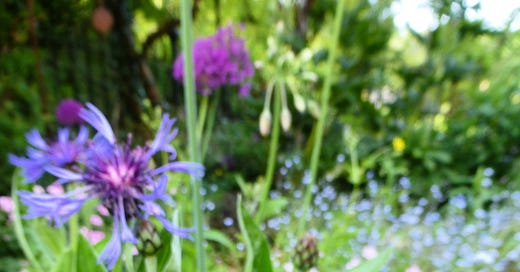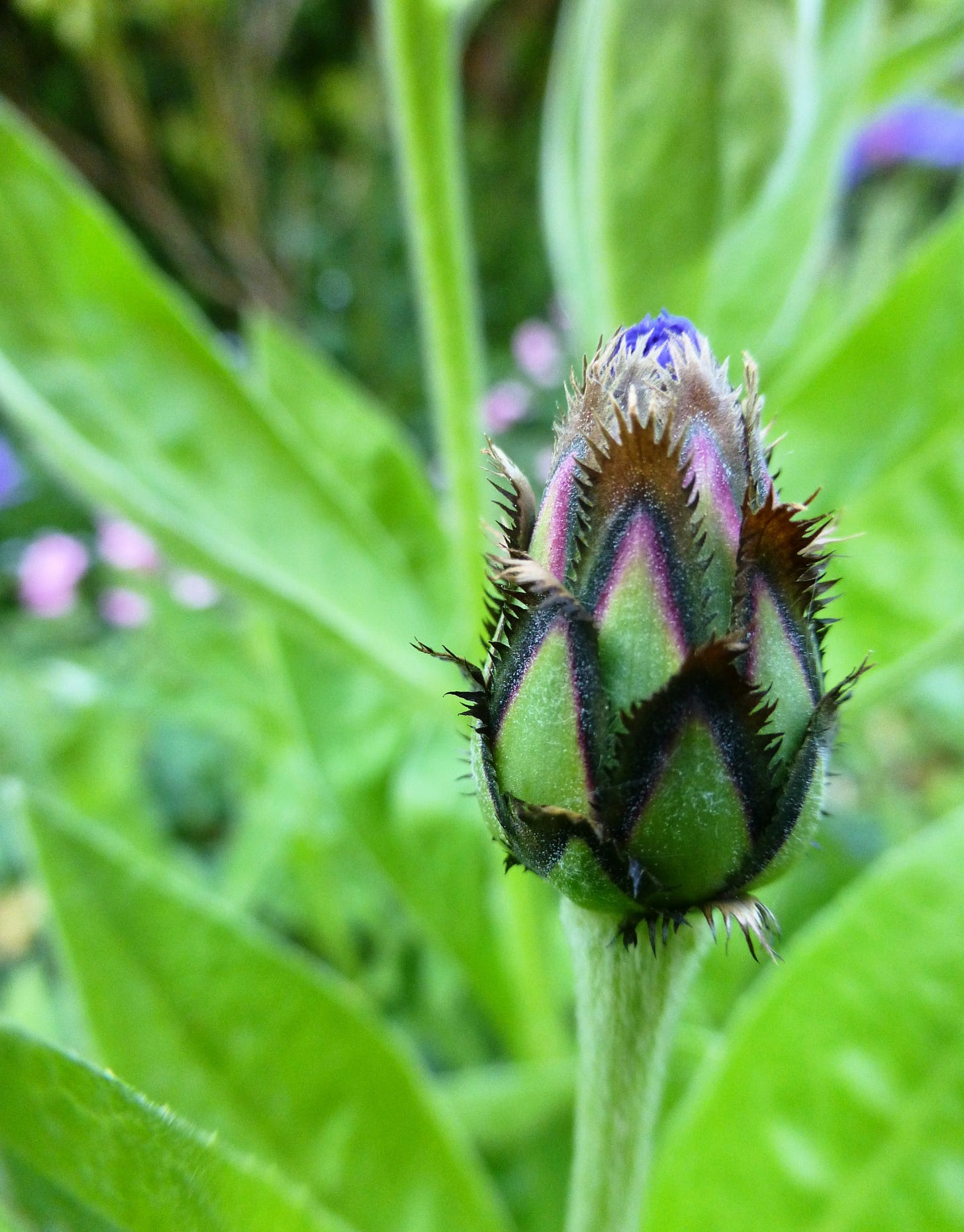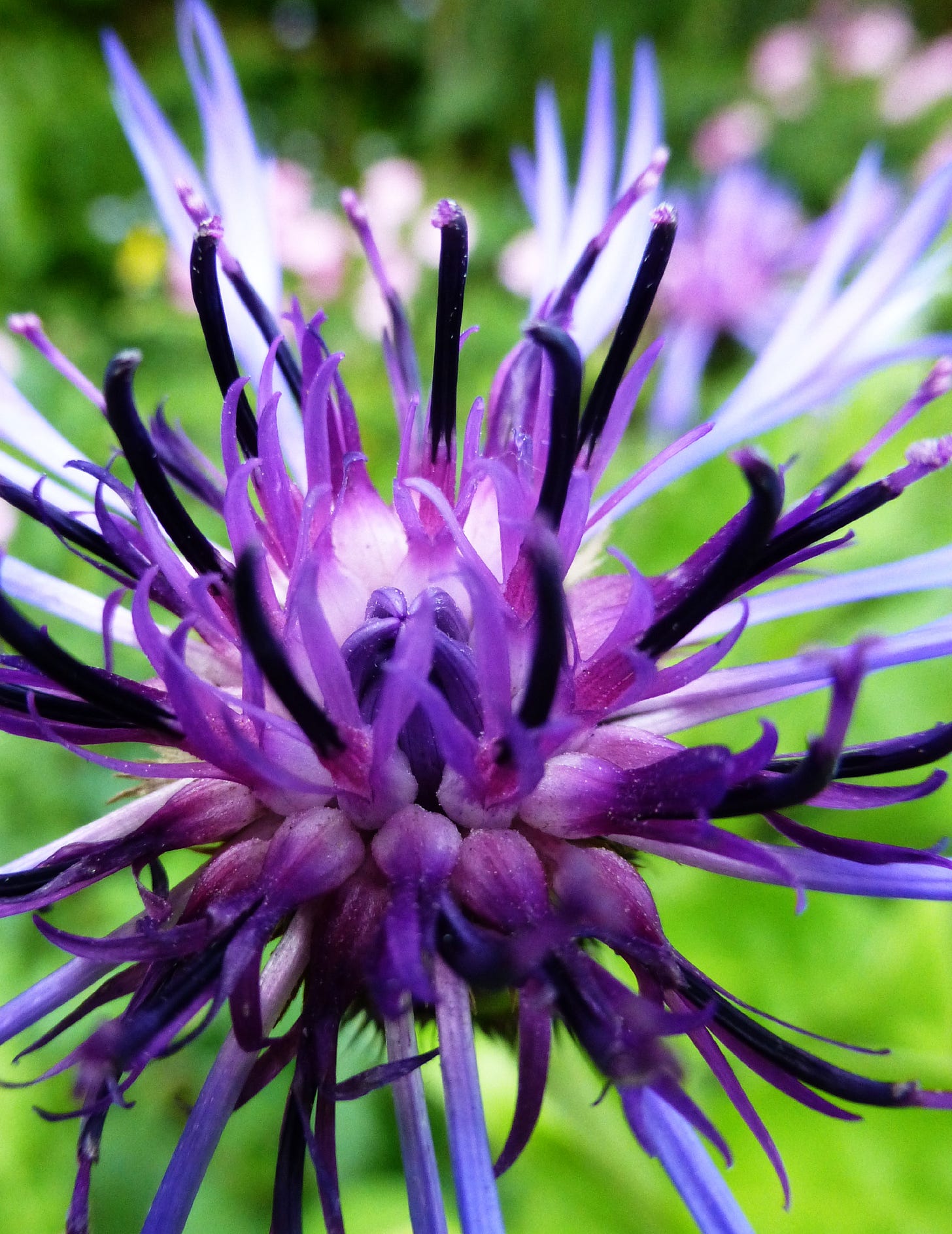I’ve always known Centaurea montana as “Nan’s cornflower”. It’s a plant that was given to me when I moved into my first house, a rented terrace with a long skinny garden. The garden was covered with exuberant grass and had thin, sandy soil. It was my first canvas. Money was scarce as hen’s teeth (I do love that phrase) so all plants were begged and received with no knowledge or insight into the wheres and hows of gardening. I used no compost to ease their roots in to their new life, paid no thought to whether they needed to face north, south, east or west and no thought about how far or wide they would spread. The ones that survived were tough. Nan’s cornflower was one of these, and it’s come with me to every garden since.
I knew very little about my nan. She was small, quiet and cooked enormous dinners for my equally enormous grandad. I rarely saw her eat. She gardened when she could, which was rare given that she was mother to seven children. Looking back, with the little knowledge I have of her circumstances, it is incredible that she had time to grow anything at all. I think it’s something that gave her some pleasure, perhaps a moment of calm. This sense of safety from the soil seems to be an intrinsic part of the lives that came before me.
So what of this flower? It’s a perennial cornflower that hails from the mountains of southern europe and was brought to England in the 1500s. It’s mesmerising blue gives rise to its alternative name “the great blue bottle” which ties in so well with the invention of Bristol Blue Glass that hails from the same period (and also happens to be another of my Dad’s favourite things). It’s a flower that is gorgeous in the chaos of a cottage garden, grows in pretty much any type of soil, and cares very little which way it is facing.
In full bloom the flowers are a burst of fireworks against their downy green leaves. In bud the thistle shape bears resemblance to the scales of a pangolin, adorned with deep black false lashes. It’s a plant that was used in healing, and that is able to grow in the most inhospitable places, which explains why it can be seen as part of the urban landscape, alongside buddleia, toadflax and rosebay willowherb. These are resilient, determined plants that thrive in homes that are not always kind to them.
I’ve spent some time with Centaurea Montana this morning, taking photographs, enjoying it’s geometric shape, the bulbous sack at the base of its style. It feels resilient. The otherworldly petals are flexible and move with ease in the wind. The filament is tough to the touch almost, but not quite, a spike. This is a plant that would cope with a mountainside. Beyond this resilience, this stoicism, is Centaurea Montana’s mesmerising hue. Not quite purple, not quite blue - it hovers in between, changing as light shifts through shadows, peers between buildings and trees.
A poem for Centaurea Montana
Centaurea Montana finds its way in nan’s garden This blue, that might be the colour of Elizabeth Taylor’s eyes, that is most certainly the inspiration for songs of velvet, of moons, of sadness that settles. This blue that tolerates confinement, scant nourishment, drought. This blue that reminds me how little I knew you. This blue that was used to treat battle wounds This blue, this mountain lily, that spreads, flourishes, becomes abundant, if it finds itself free. This blue that was treasured by some.
Until next time
Kathryn
xx







It made me so happy to read about nan’s flower. We have lots of it my garden and love it. It’s self seeded itself in abundance. The sight of it makes my heart sing and yes you’re right when closed it does look like a pangolins scales ❤️
Thank you for this! Each year I learn a little more about gardening and this year I started growing from seeds. I love how much you get to observe when you watch a plant grow from the first break in the soil. It develops such a lovely relationship. Your description of your relationship with the Great Blue Bottle speaks of that kind of knowing.